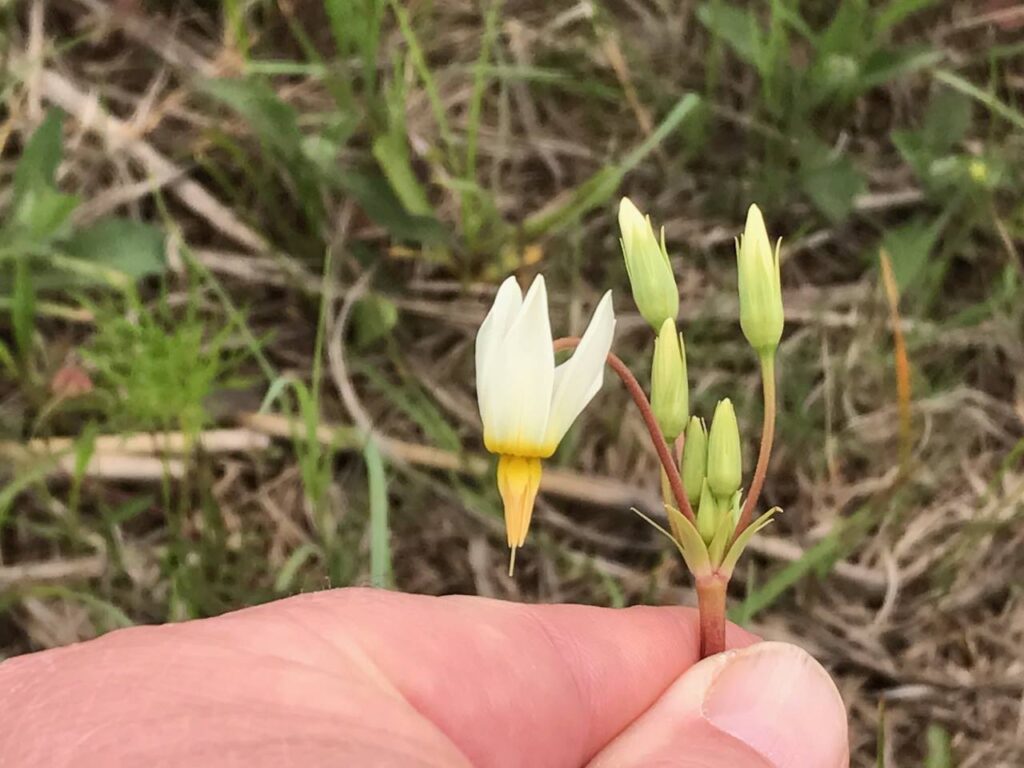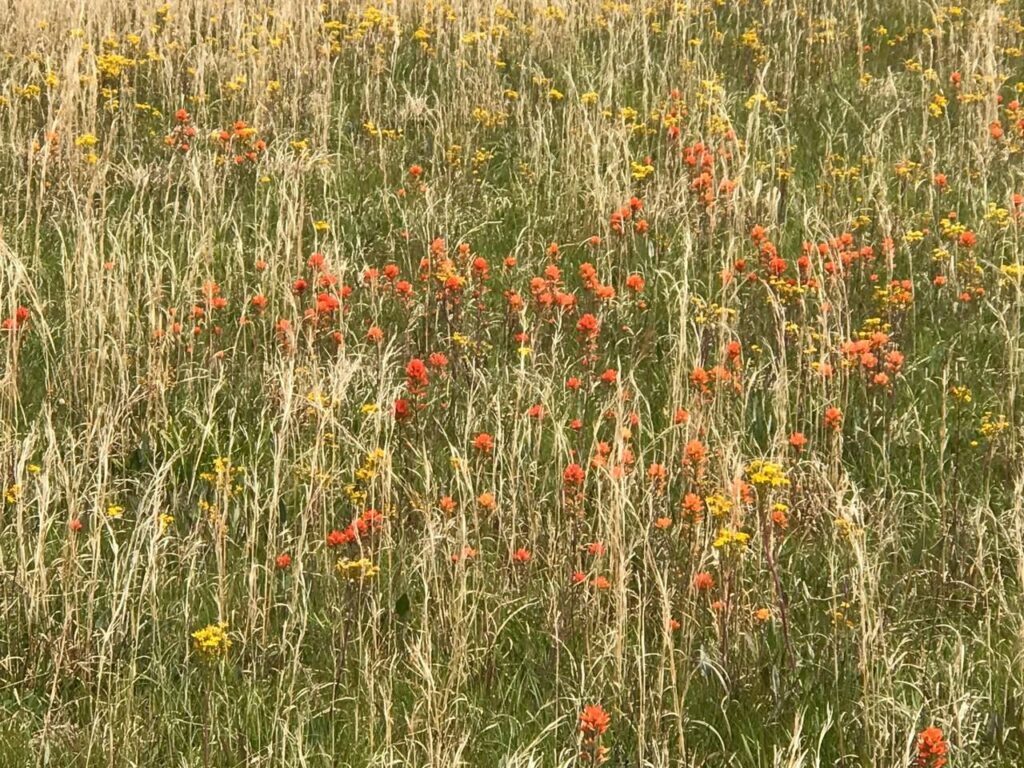
On April 29, 1819, a few days after his arrival at Fort Smith, Nuttall “took an agreeable walk into the adjoining prairie, which is about two miles wide and seven long.” This was Massard Prairie, though not named as such by him.
“Like an immense meadow, the expanse was now covered with a luxuriant herbage, and beautifully decorated with flowers, amongst which I was pleased to see the Painted Cup… accompanied by occasional clusters of a white flowered Dodecatheon.”
Painted Cup is another name for Indian Paintbrush (Castilleja coccinea) and Dodecatheon is shooting star (today placed in the genus Primula, therefore, Primula media).
On Saturday, April 20, 2018, I took a walk in a surviving patches of Massard Prairie in Fort Smith, and Pickle Native Hay Meadow near Poteau, and saw both these flowers blooming, nearly 200 years after Nuttall. While shooting star flowers across their range may be colored purple to rose to white, on Massard Prairie I have always found them white, as Nuttall did.
This coming Saturday, April 28, on our Nuttall Tour 2.0, organized through the Kiamichi Technology Center, (https://ktcbis.augusoft.net/index.cfm…) we’ll see what else we can find that Nuttall recorded and still grows in local prairies. We will visit Ben Geren Golf Course, constructed in the middle of Massard Prairie, where Jay Randolph will show us his work restoring and protecting native prairie species on site, and we’ll visit the Pickle Native Hay Meadow near Poteau where unplowed prairie has been cut for hay for generations, and which is very near where Nuttall camped one night on an excursion to the Red River.
(Re Primula vs. Dodecatheon: “In my heart two things are true: shooting stars will always belong to Dodecatheon, and, regretfully, all of them are actually members of the genus Primula” – James Reveal)

